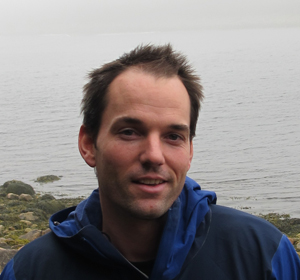 |
| The research story about Daniel Boyce's phytoplankton study drew the most traffic in 2010. |
Throughout the year, HÂþ» shares our best news stories with media outlets from around the world. As we look back on 2010, a number of stories stand out as having received generous media coverage.
These top research stories in terms of media interest shared a number of themes (ocean research was a consistent popular topic, for example) and each one captured the imagination of the public.
- Jeff Hutchings, a HÂþ» professor and former chair of the Committee on the Status of Endangered Wildlife in Canada, said that despite reduced catches in Canada since 1992, cod are now at such historically low levels that they may no longer be able to replace themselves in their ecosystem, increasing the chances the species could face extinction. This story was particularly popular in the blogosphere and with mainstream press across Canada. See Dal News story: Risk of extinction increases for cod
- AÂ team of researchers led by Dal researcher Derek Tittensor found links found between ocean temperature and marine biodiversity. News of the study published originally in Nature caught fire around the world in both the traditional press and the social media world. It was picked up by news outlets like Wired Magazine, the Wall Street Journal and was particularly popular in the Australian media (where HÂþ» oceans stories are often popular). See the Dal News story: Finding the hot spots of marine diversity
- Nathan Pelletier and Peter Tyedmers of the HÂþ» University’s School for Resource and Environmental Studies examined consumption and production in food systems and, in particular, the livestock industry, focusing on greenhouse gas emissions, reactive nitrogen mobilization and appropriation of plant biomass. The topic stirred up controversy and was a dominant topic on a number of blogs and other social media sites in October. The story was also followed in the New Scientist, BBC, Macleans and MSNBC. See the Dal News story: Stressing the planet
- The Dal research story to draw the most traffic involved a Dal team led by PhD candidate Daniel Boyce who studied a particular type of algae known as phytoplankton. It was the first time that significant research has been complied and examined to study the algae levels in the world’s oceans. With preliminary conclusions suggesting that rising ocean temperatures are the leading cause of the decline of phytoplankton, the story was a media sensation, receiving coverage in a long list of publications and networks around the world including the BBC, MSNBC, The Globe and Mail, Huffington Post, Mother Jones, the Daily Mail, the Los Angeles Times and der Spiegel. See Dal News story: Phytoplankton in retreat
What is notable in each of these stories was how well-received they were within the world of social media; that is to say, they were popular topics for discussion. A number of these stories garnered a great deal of opposition to their central theses, which made for often-spirited debate.
2010 marked a high point for on-line news coverage of HÂþ» research stories, showing once again the importance this aspect of the media universe in the way we share our stories. As always, when we have great stories to tell, the world will be listening.
